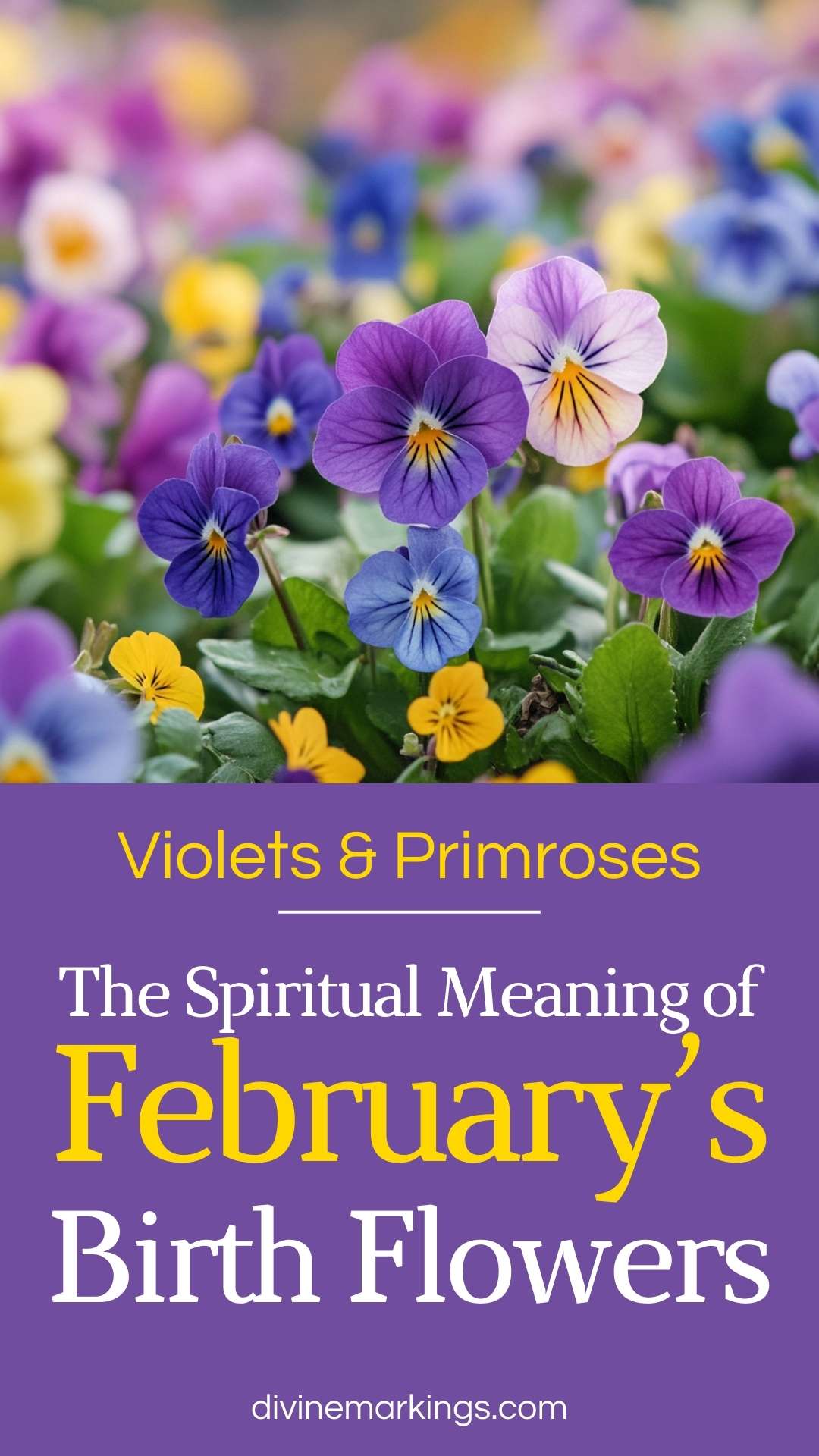February is a month of romance and renewal, and the birth flowers for this chilly month, violets and primroses, reflect that. Violets are known for their heart-shaped leaves and vibrant colors, such as purple, blue, yellow, and white. Their symbolism is tied to modesty, loyalty, and spiritual wisdom, making them a perfect symbol of love and deep emotions. You might find violets pop up early in the spring, signaling the new beginnings that come after winter.
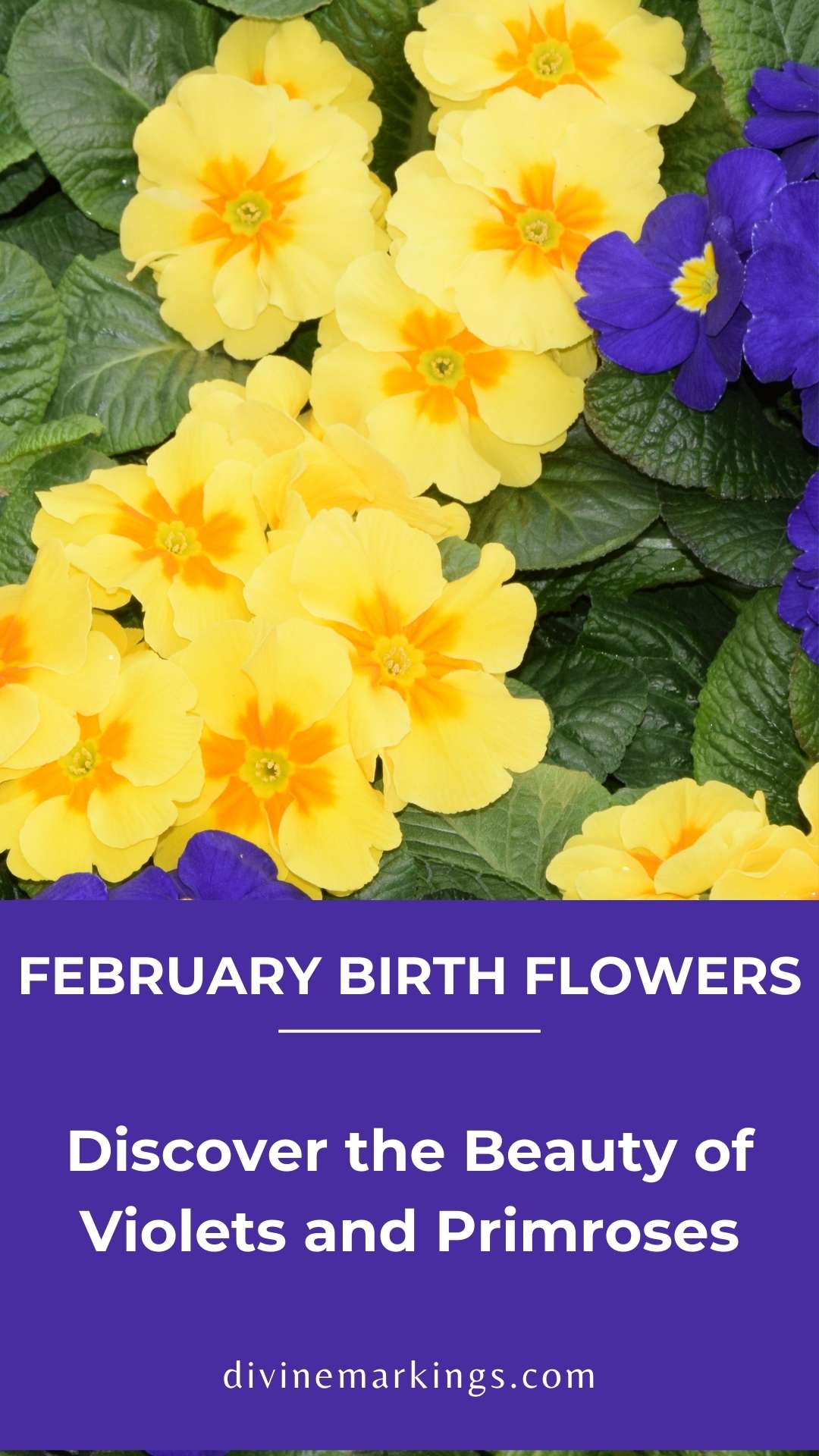
On the other hand, primroses are often seen as the messengers of spring with their bright, cheerful blooms. These flowers, available in an array of colors, are symbolic of youth, renewal, and positivity. Great for gardens and even more fun when used creatively in kitchen dishes, primroses can bring a burst of joy to any February day. Edible and often adding a unique flavor, they can be a delightful surprise in baked goods or salads.
With violets and primroses, February’s birth flowers offer a delightful blend of beauty and meaning. Their sweet fragrances and colorful displays remind us that even in colder months, warmth and brightness are just around the corner. If you’re celebrating a birthday this month or know someone who is, these flowers can add a special touch to the festivities, connecting the celebration with nature’s own signs of love and renewal.
The Significance of Birth Flowers
Birth flowers play a unique role in reflecting traditions and personal attributes. They connect to history, culture, and emotions, providing insight into the past and influencing how we express feelings today.
Historical Roots and Victorian Influence
Have you ever wondered why we associate certain flowers with specific months? In the Victorian era, flowers became a secret language. Known as floriography, this practice turned blooms into messages. People used flowers to convey emotions they couldn’t speak aloud.
In February, violets and primroses stepped into the spotlight. These flowers held meanings of loyalty and youth, tying seamlessly to the traditions of the time. Victorians believed in the symbolism of these flowers. Violets symbolized modesty and elegance, while primroses represented the innocence of youth.
Such symbolism made selections of flowers an art form. They became embedded in social customs, impacting how people expressed love and friendship. Vibrant blooms weren’t just pretty décor; they were communicators of heartfelt sentiments.
Meanings of February Birth Flowers
So, why do these February flowers matter in today’s world? It’s all about the messages they carry. Violets, often seen in shades like purple and blue, stand for faithfulness and modesty. Their heart-shaped leaves add to this gentle image.
Primroses, lively and bright, embody youth and new beginnings. They come in many colors, including yellow and pink, each carrying its distinctive vibe.
This symbolic language continues to influence how we view these flowers today. Even as society evolves, these flowers remind us of time-honored meanings and connections to emotions shared over generations. It’s fascinating how a simple flower can hold so much depth!
Violets: A Symbol of Modesty and Faithfulness

Violets have long carried meanings of modesty and faithfulness. Their vivid colors and delicate shape represent deeper emotions and connections. Let’s explore how to grow violets, their mythological and literary roles, and the practical uses of these beautiful flowers.
Growing Violets: Care Tips and Conditions
Violets, often admired for their charming heart-shaped leaves, thrive in specific conditions. To see them flourish, you should plant them in areas with partial sunlight. Too much direct sunlight can harm them, so choose spots with filtered light. They prefer rich, well-draining soil. Keeping the soil consistently moist, but not waterlogged, is key—so water them regularly, especially in dry weather. Maintain a comfortable temperature for violets, which isn’t too hot or cold.
Violets can be grown both indoors and outdoors. When indoors, bright indirect light works best. Consider using pots with adequate drainage holes. Furthermore, these plants appreciate a little room to spread, so plant them with enough space. Regularly remove dead flowers to encourage fresh growth, and you’ll have a beautiful display of violets in no time!
Violets in Mythology and Literature
Violets have woven their way through mythology and classic literature, symbolizing more than beauty. In Greek mythology, violets are linked to love stories and were often associated with gods like Venus and Persephone. These blooms often symbolized love and the promise of spring, which Persephone’s return brought each year.
In literature, William Shakespeare frequently mentioned violets. Violets appear in plays like Hamlet, where they symbolize faithfulness and sincerity. These references reflect their deep-rooted symbolism, tying violets to themes of love and loyalty. So, next time you read a classic, look out for violets; they may tell a story of their own!
Utilizations Beyond Beauty: Herbal Remedies and Uses
Besides their visual appeal, violets offer medicinal uses. Violets have been traditionally used in herbal remedies, believed to help with coughs, colds, and skin irritations. It’s common to use them in teas, which promote a calming effect. Some people also incorporate violet leaves into poultices.
The violet’s sweet scent makes it a popular ingredient in perfumes. They can also be used in culinary dishes, adding flavor and decoration. From medicinal to culinary uses, violets prove they are more than just pretty flowers; they are versatile and valuable in daily life.
Primroses: Emblems of Love and Renewal
Primroses bring vibrant colors to gardens while symbolizing themes of love and renewal. Their culture stretches back through history, popping up in folklore and festivals. As early bloomers, they add a cheerful touch to the season’s renewal.
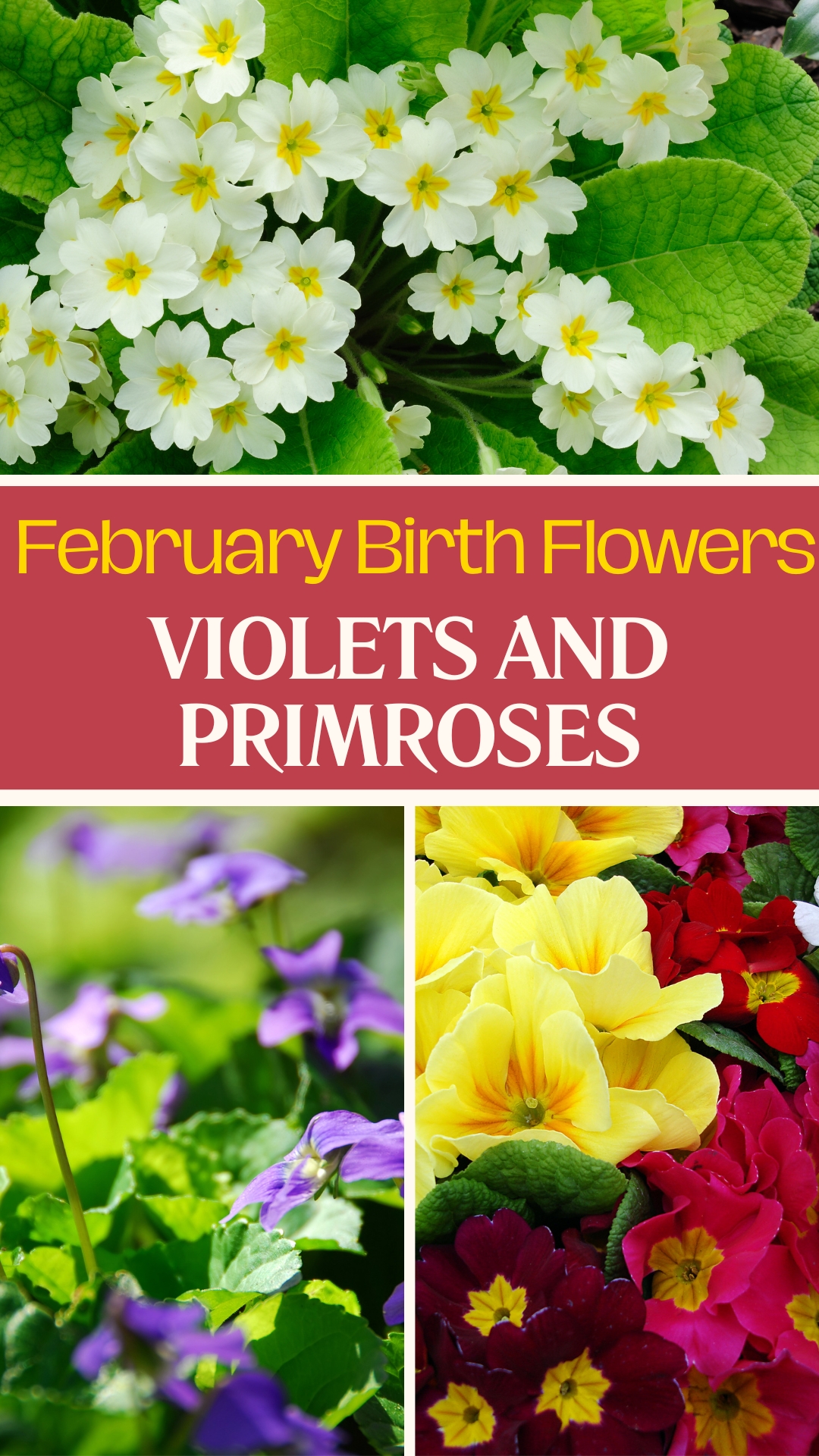
The Wide Palette of Primrose Colours
Primroses come in an array of colors that can brighten any garden. You’ll find them in white, pink, purple, and especially yellow, which is often the most popular. Their colors’ diversity is enough to suit any taste and garden design. Each color holds its unique charm, and if you mix them, you create a lovely sea of blooms.
These lively flowers, blooming early in spring, make them a favored choice for that fresh pop of color after winter. People commonly plant them in borders or pots. Their heart-shaped leaves and simple design hide a profound symbolism, making primroses a symbol of a new beginning.
Cultivation: Ensuring Primrose Perennials Thrive
Growing primroses can be easy if you know what they like. Primroses prefer partial shade and moist, well-drained soil. It’s important to keep the soil damp but not waterlogged to prevent rot. If you’ve planted them in the right spot with rich soil, primroses will come back every year, delighting you with their colorful display.
Mulching enriches the soil, helping retain moisture while keeping the surroundings tidy. Primroses do well in cool conditions, so planting them in early spring or autumn works best. They rarely need much fuss, yet they yield a stunning payoff by returning each season—the perfect perennial indeed!
Expressing Sentiments with Flower Gifts
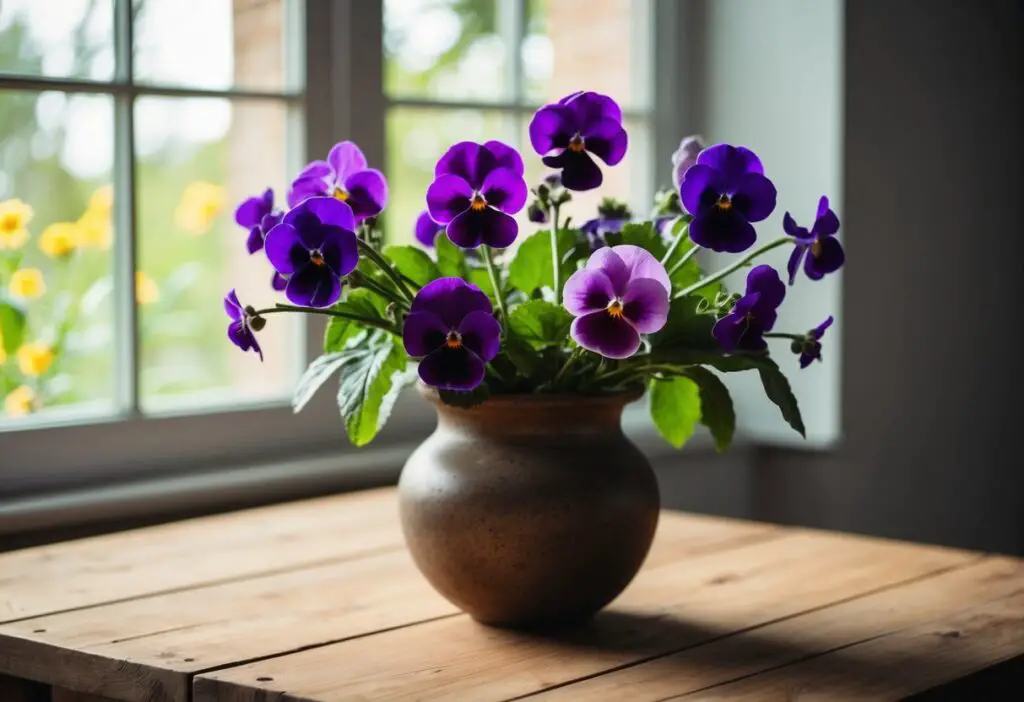
When it comes to expressing your emotions, flower gifts can say it all. Ever thought about giving violets or primroses to someone special? These flowers are the perfect way to show you care. Whether it’s for a birthday or just because, they make a great gift choice.
Violets symbolize humility and everlasting love. If you want to convey feelings of loyalty or remembrance, a bouquet of violets says it best. Picture a friend smiling as they receive these charming purple blooms. It’s a simple way to express enduring love and friendship.
Primroses, on the other hand, are all about youth and renewal. Do you know someone in need of hope or a fresh start? Gift them primroses. Their bright colors can uplift spirits and brighten anyone’s day. Primroses remind us of new beginnings.
How do these flowers make great birth flower gifts? They’re linked to February, so if someone celebrates a February birthday, these blooms are both meaningful and thoughtful. Adding a sweet card saying why you chose them adds an extra touch.
Choosing the right flower gifts can communicate what words sometimes can’t. Whether you’re expressing friendship, love, or a mix of emotions, the right flowers can make those feelings clear. So next time you’re picking out a gift, think about what you want to say and let the flowers do the talking.
Gardening Insights: Growing and Caring for Birth Flowers
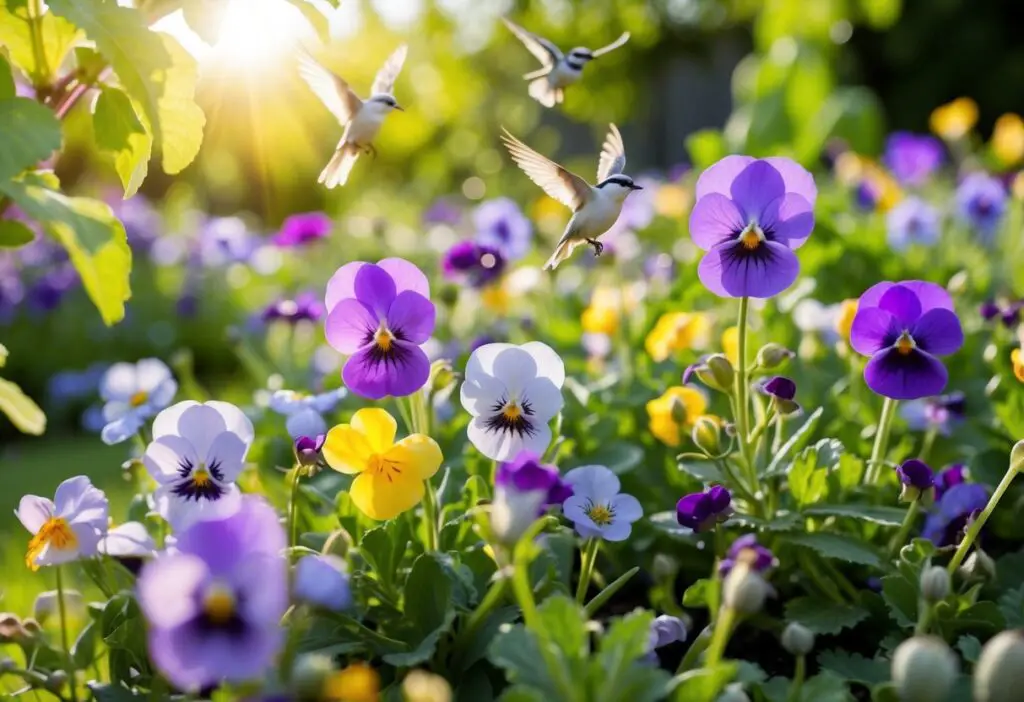
Violets and primroses are not only beautiful but also carry deep symbolism. Proper care will ensure these flowers thrive in your garden. Let’s look at how to grow them successfully.
Best Practices for Violet Cultivation
When growing violets, it’s important to choose the right location. Violets prefer a spot with partial shade, avoiding direct sunlight. They thrive in well-drained, moist soil. Make sure the soil is rich in organic matter to help retain moisture without becoming soggy.
Watering is crucial. Keep the soil consistently moist, but avoid overwatering to prevent root rot. Violets also like high humidity levels, so consider placing a tray of water nearby or misting them occasionally.
Don’t forget to deadhead spent flowers to promote continuous blooming. It’s also beneficial to apply a balanced, water-soluble fertilizer every few weeks during the growing season. This helps support the plant’s overall health and encourages more blooms.
Primrose Planting and Maintenance Advice
Primroses are charming when added to any garden. They enjoy a cool climate and do best in partial shade, similar to violets. Moist soil is essential for these plants, but ensure it’s well-drained to prevent waterlogging.
For planting, space the primroses about 6-12 inches apart. This prevents overcrowding and ensures good air circulation. Water regularly, especially during dry spells, to maintain the soil’s moisture, but avoid sogginess.
To keep your primroses healthy, remove faded flowers to encourage new growth. This practice also maintains a tidy appearance. Feed your primroses with a slow-release fertilizer at the beginning of the growing season to provide them with essential nutrients.
Through these tips, you’ll enjoy the beauty of violets and primroses thriving in your bright, cheerful garden space.
Interesting Facts About Violets and Primroses
Did you know violets are not just purple? These charming flowers, known scientifically as Viola, come in many colors like white, blue, and even yellow. Found mostly in the temperate Northern Hemisphere, violets also thrive in places like Hawaii and the Andes.
Violets often symbolize modesty and spiritual wisdom. The small, heart-shaped leaves of violets add to their gentle appearance. They are perennials, meaning they bloom year after year, adding beauty to gardens with little effort.
Primroses are just as fascinating. They are happy, dainty flowers that come in pink, yellow, purple, and white. As perennials, they return each spring, symbolizing new beginnings and hope. Have you ever thought of primroses as small shrubs? Their clusters of flowers make them look bushy and full.
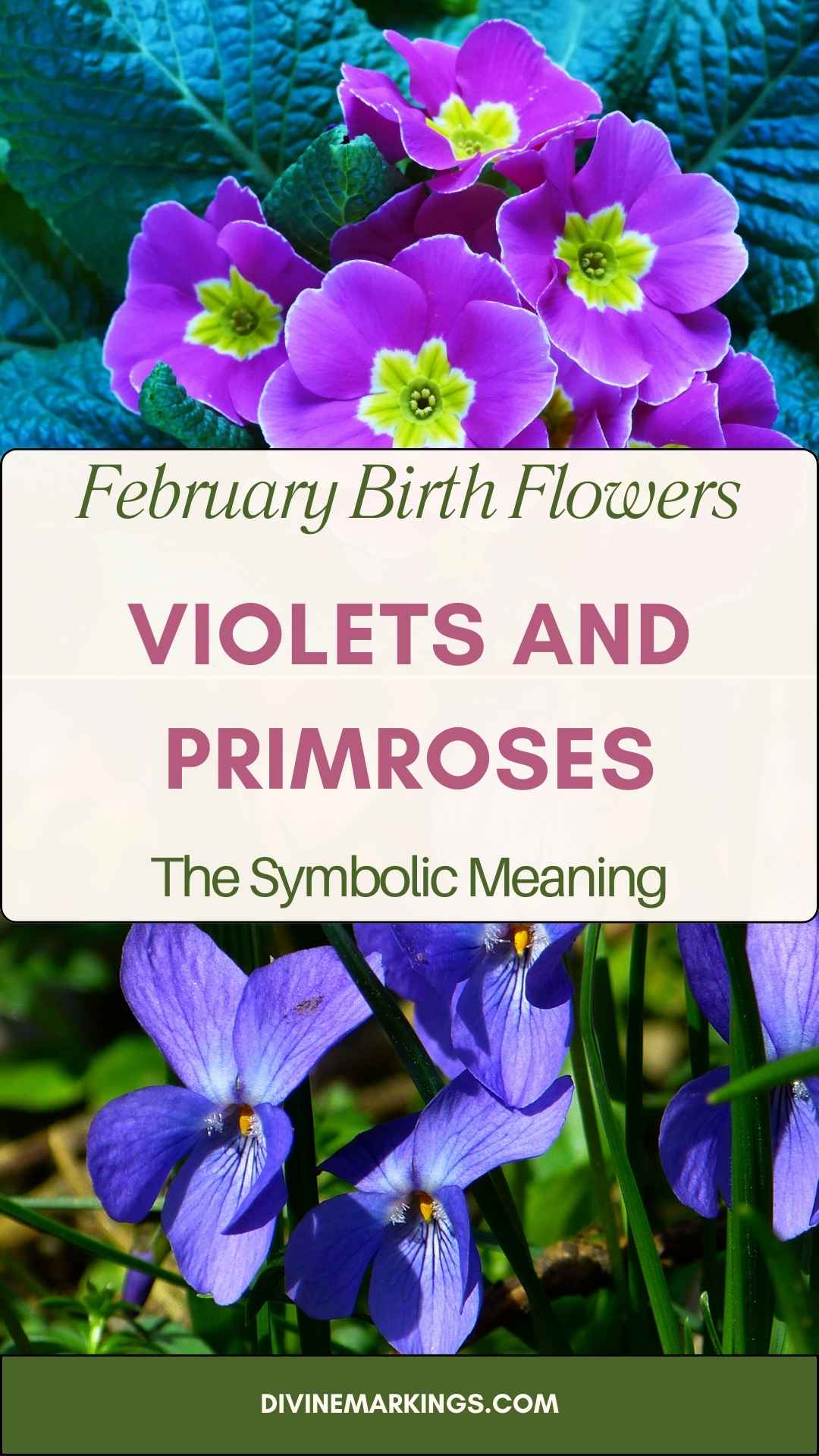
Guess what? There is a special day dedicated to the primrose! Primrose Day is observed on April 19 in the UK, honoring the fondness of British Prime Minister Benjamin Disraeli for these blooms.
Both flowers are as beautiful as they are meaningful. They make a unique way to celebrate a February birthday by adding an extra touch of magic and thoughtfulness.
These flowers bring a delightful mix of charm and history. Whether you plant them in your garden or gift them to a friend, violets and primroses have lovely stories to tell.
Frequently Asked Questions
Are you curious about the charm and significance of February’s birth flowers, the violets and primroses? Let’s dive into their meanings, explore creative tattoo ideas, compare them with other birth flowers, and discover why they make great gifts.
What is the symbolism behind violets and primroses as February’s birth flowers?
Violets symbolize modesty, faithfulness, and everlasting love. These tender blooms often evoke feelings of love and affection. On the other hand, primroses stand for youth and new beginnings. They introduce a sense of renewal, perfect for the start of the year.
Can you suggest some creative ideas for violet and primrose themed tattoos?
Tattoos featuring violets can include heart-shaped leaves or petals in shades of purple or blue. Try combining violets with other symbols like hearts for a love theme. Primrose tattoos might include youthful motifs or blend with seasonal elements. Experiment with a watercolor style for a lively and colorful design.
How do violets and primroses differ from other popular birth flowers?
Unlike roses or lilies, violets and primroses offer a less traditional but equally meaningful choice. Their unique colors and symbolic associations—such as loyalty for violets—set them apart. They aren’t just pretty; they carry distinct messages perfect for a unique birthday touch.
What are some interesting facts about violets and primroses?
Violets come in a variety of colors like purple, blue, white, and yellow. Fun fact: You can eat them! Try candied violets on cakes. Primroses, with their peppery taste, are also edible. They’re not just beautiful; they can add unique flavors to your culinary adventures.
Why might someone choose to give violets or primroses for a February birthday?
These flowers perfectly tie into February’s themes of love and renewal. They make thoughtful gifts, symbolizing deeper connection with the birthday person. Who wouldn’t want a bouquet that stands for loyalty and new beginnings to brighten their day?
Can you explain the historical significance of violets and primroses in relation to birth months?
Both violets and primroses have been linked to various cultures for their symbolism. Violets, for example, were favored in the Roman Empire, representing peace and protection. Their association with birth months adds a touch of tradition and meaning to your February celebrations.
